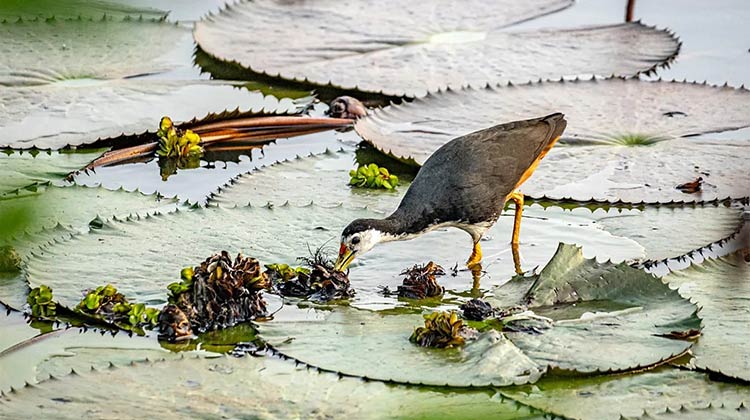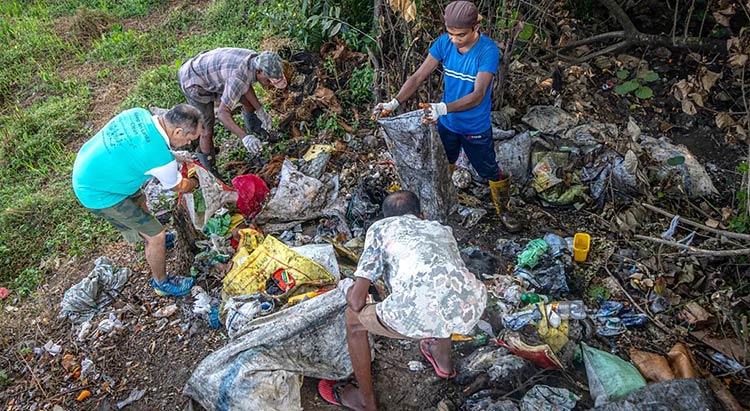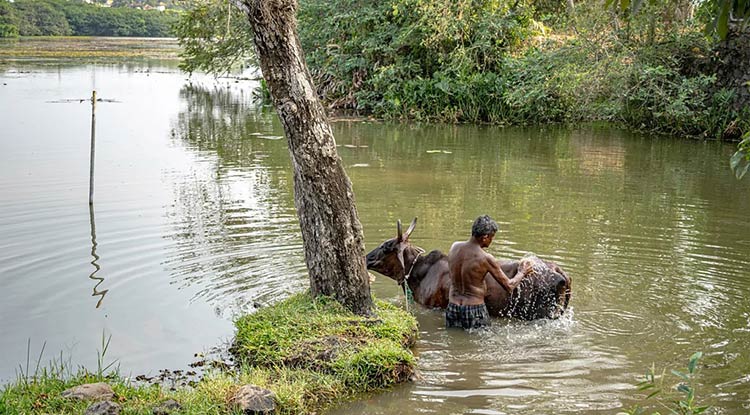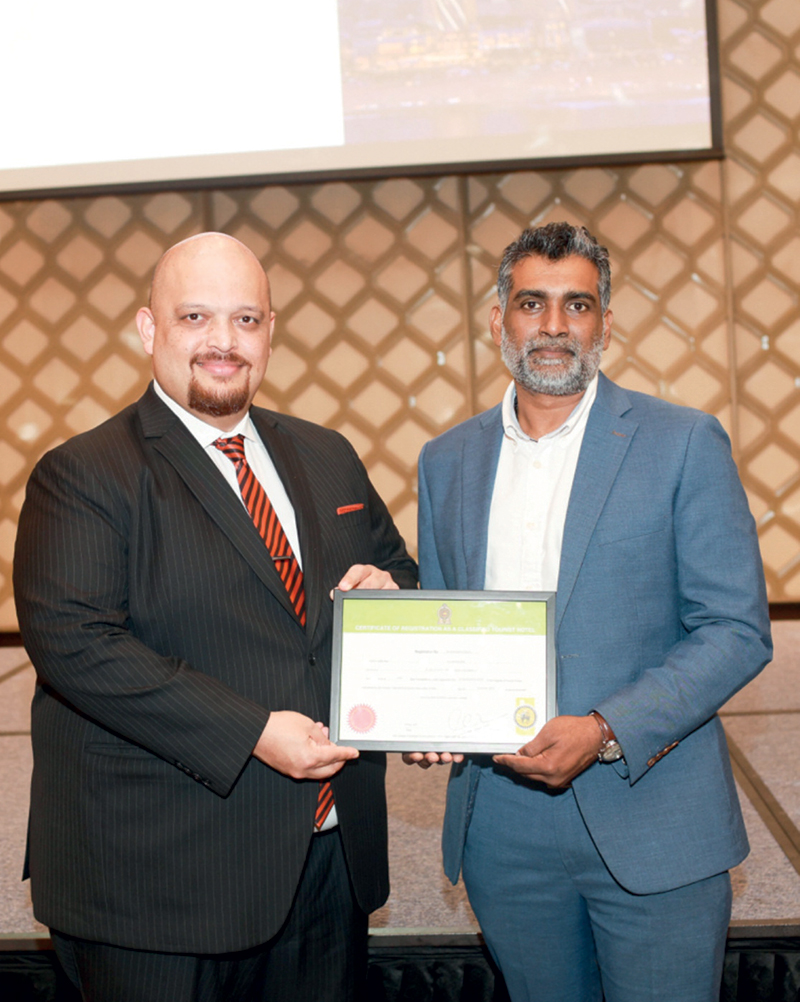Life style
The fight to save Sri Lanka’s natural flood buffers

By Zinara Rathnayake
Pay Drechsel is going for his daily morning walk around Talangama Wetland, in Sri Lanka’s capital Colombo. The sun casts a warm glow over flowering pink water lilies as a farmer scrubs down his water buffalo. A kingfisher hovers nearby. Soon, photographers will arrive to capture curved-necked egrets, waders probing for crawling worms, and little cormorants diving for freshwater fish.
Talangama Wetland and its surrounding swamps, reedbeds, canals and rice fields teem with life. But this hasn’t always been the case. About 15 years ago, these ecosystems were degraded and filled with rubbish. They were “dirty, very dirty”, says Drechsel, interim country manager at the International Water Management Institute (IWMI) in Colombo.
He recalls how he spent one Christmas almost a decade ago cleaning the lake, scouring for piles of rotting garbage leaking contaminants into the water, and sorting waste for recycling. To his surprise, passersby stopped and started helping him. “I realized it’s not only me, locals also appreciate it,” he says. “But like me over all the years, they may have been waiting for someone to take the lead.”
The community came together to keep the massive wetland complex clean, forming the Talangama Wetland Watch. Residents organize weekly collection runs, piling up sorted waste at a small collection unit which the municipality sends off for recycling. School kids volunteer, kayaking through the lake to dig up invasive water hyacinth.
Home to over two million residents, Colombo is built on and around a massive network of wetlands. In 2018, Colombo became one of the 18 Ramsar wetland cities in the world – an accreditation which recognizes cities for their commitment to restore, safeguard and value wetlands, with 25 new cities added to the list in 2022.
As Colombo is located in a river basin, the city is naturally prone to floods. Colombo’s wetlands act as a flood buffer, with 40% of floodwaters draining into wetland areas. They also sink carbon, purify the air and control temperatures. As temperatures warm and rains become more erratic, “wetlands are important to the city to mitigate climate change impacts”, says Chethika Gunasiri, an environmental scientist at the University of Tokyo who was part of Colombo’s Ramsar application. “Wetlands help Colombo mitigate pollution and natural disasters. They help reduce human stress as more and more people are now living in high rise buildings,” she adds.
Historically, wetlands were a “part and parcel of people’s lives in Colombo,” says Missaka Hettiarachchi, a senior fellow at the World Wildlife Fund’s environment and disaster management programme, who has been studying wetlands in Colombo for several years. Ancient kingdoms thrived in a well-managed wetland system where people used them for transport and to grow food, Hettiarachchi says.
Their downturn began in the British colonial period from the late 18th Century. When industries grew, people acquired wetlands to drain for building housing and businesses. A flood retention scheme introduced during British rule in 1924 led to the creation of man made drainage canals, preventing people from travelling through the wetlands. Although they are regularly cleaned, many of these canals are now polluted and choked with invasive plants.
- The restoration has boosted wildlife populations in Colombo’s wetlands
- Thalangama Wetland in Colombo used to be filled with rubbish but is now teeming with life
“The canals are no longer enough to prevent Colombo from flooding,” says Gunasiri.
After independence in 1948, subsequent governments declared some wetlands for flood buffering, and filled up others to make space for living, Hettiarachchi says. “And people thought wetlands were also a very, very attractive space for garbage dumps, because, you know, no one is living there, right?” This meant that people dumped everything from food waste to solid waste and chemicals while releasing sewage into the wetlands.
From the 1980s, massive rubbish mountains began to appear in natural wetlands, such as Meethotamulla in the Colombo metropolitan area, which spans 100,000 sq m (107,639 sq ft) and stands 60m (197 ft) tall. The wetland was closed after one of the rubbish mountains collapsed and killed 32 people in 2017.
During the civil war (1983-2009), the encroachment of wetlands continued, as they were sold to internally displaced people, Hettiarachchi says. Some marshy wetlands turned into shrub habitats that couldn’t hold enough water to protect the city from flooding, he says. According to one study, Kolonnawa Marsh, which forms the largest part of Colombo’s flood retention belt, has lost 65% of its area since the 1800s. A 2014 study concluded that 44% of the marsh has turned into a shrubland. The soil too has changed, reducing its capacity to absorb and drain water, leading to increased flooding and disasters.
By the 2000s, the city’s wetlands were “a bloody mess”, Hettiarachchi says. During his PhD, he would ask residents living near the degraded wetlands about these ecosystems, and they would respond: “No, we don’t know any wetlands.”
The decline of the wetlands made Colombo more prone to flooding. In 2010, a series of disastrous floods affected nearly 700,000 people and submerged the country’s parliament. This led to a shift in government policy. “I think it took a few significant flooding events for the government to realize, okay, wetlands are a significant flood control mechanism, so we need to do something about it,” says Radheeka Jirasinha, a freshwater and wetland management researcher at IWMI.
As part of the ongoing revival, the government introduced the metro Colombo wetland management strategy in 2016, which aims to include wetlands in urban planning, prevent further wetland loss, restore the ecosystems and involve the local community in their conservation. Following that, wetlands were incorporated into urban infrastructure by constructing cycling tracks, jogging paths and recreational areas around them.
“The idea was to bring people to the wetlands,” Gunasiri says. The government initiatives pulled up invasive species like water hyacinth and introduced new soil and wetland plants to attract birds and other animals.
Today, Colombo is home to four wetland parks and several other recreational spaces linked by wetlands. These restored wetlands look very different from those left untended. Photographer Nazly Ahmed says that when he went to Kotte, a Colombo suburb and the administrative hub of the country, in the late 1990s to play cricket with friends, the wetlands were covered entirely by water hyacinth. This invasive weed clogs waterways, grows over native plants, reduces oxygen and creates breeding grounds for mosquitoes, and their growth is linked to poor water quality and high pollution levels.
This Colombo suburb is now home to jogging paths and bird watching spots built around the wetlands and waterways. “No one knew about wetlands then, but people are talking about wetlands now,” says Ahmed.
Gunasiri says these green infrastructure projects have helped people to engage with the city’s wetlands again and that people now flock to the urban wetland parks for an evening jog. “When these natural systems become public areas, people start to have a sense of ownership,” she says.
Jirasinha agrees. People feel that they can use these spaces now, she says. “They’re concerned about what is happening. And suddenly, people look at the water and are like, ‘Hey, it’s polluted…where is that coming from’?”
It’s not only the government that is managing Colombo’s wetlands. Community initiatives like the Talangama Wetland Watch have started to take responsibility too. “If you keep wetlands free from rubbish and maintain them, they increase the property value in urban areas,” says Drechsel, who believes people are willing to pay twice as much for land with wetland views.
Although there’s an attitude shift and residents are now aware of the value the wetlands add to the city, problems are far from over, Hettiarachchi says. After the civil war ended in 2009, Colombo’s urban population expanded rapidly. Developments sprung up, leading to the draining of wetlands for housing, businesses and infrastructure. Since 2009, Colombo has lost 2.12 sq km (0.8 sq miles) of its wetlands.
According to a 2024 study, wetlands absorb 62.1mm more floodwater than built up areas in Colombo. Despite collective efforts to clean and restore some of the city’s wetlands, the overall loss of wetland area means that Colombo is becoming more vulnerable to floods, the 2024 study notes.
The Ramsar accreditation pushed the state government to temporarily suspend filling and destroying any wetlands. “So there’s definitely proactive action to safeguard the city’s wetlands, but we need a coordinated effort from government, non-profits and communities to stop their degradation,” says Chaturangi Wickramaratne, a freshwater ecologist at IWMI.
Gunasiri explains that wetland education is vital for citizens to understand their importance in urban resilience. “More and more wetlands need to be a part of the city’s functions, linked to people’s well-being, so people begin to care about them more,” she says.
Wetlands can also help with the city’s food shortages, says Hettiarachchi. “You don’t need irrigation systems to grow food, you can use these ecosystems – they are also fabulous breeding grounds for fish,” he says.
Behind the new use of Colombo’s wetlands for people’s well-being, Gunasiri notes an underlying urgency to protect these ecosystems. “If we lose our wetlands, Colombo will be unliveable.
“BBC”
Life style
The power of being heard, with psychologist Anita Sharma

Anita Sharma is a psychologist, who approaches the human mind with equal measures of empathy and insight. Known for her calm presence and thoughtful perspectives, she works closely with individuals navigating anxiety, relationship, trauma and the quiet emotional struggles that often go unseen. With experience working with individuals, couples and families, she has built a reputation for helping people navigate emotional challenges with clarity. Compassion and confidence. Anita Sharma stands as a reassuring voice bridging science, sensitivity and cultural understanding.
What inspired you to pursue a career in psychology?
I was inspired to pursue a career in psychology because I have always been curious about how people think and behave, especially when observing the world around us today. With so much happening in society, I often found myself wondering why people responded differently to similar situations and what influenced their choices, emotions, and behaviours. Psychology allows me to explore these questions on a deeper level and understand how factors like the environment, experiences, and social pressures shape a person’s behaviour. This interest motivated me to want to better understand others and eventually use that knowledge to make a positive impact.
How has your journey been as a psychologist? Have you faced unique challenges?
My journey as a woman in this field has required a lot of resilience and self-belief. In a world that is not always kind, there have been moments where certain spaces felt intimidating, but I chose to turn those experiences into strength rather than allow it to limit me. Instead of shrinking myself, I learned to speak up and trust my inner voice. These challenges have shaped my confidence, sharpened my perspective, and reinforced my commitment to the field.
What areas of psychology Do you specialise in and why did you choose them?
I specialize in counselling, focusing on people experiencing depression and anxiety, as well as adolescents, couples, and individuals recovering from surgery. I chose this area because I’m passionate about helping people go through life’s challenges. Supporting adolescents allows me to guide young people through critical stages of growth, counselling couples strengthens relationships, and working with individual’s post-surgery helps them cope emotionally and adjust to major life changes. Overall, this field lets me make a meaningful impact on people’s mental and emotional well-being.
How Do you approach therapy or counselling with clients facing anxiety or depression or trauma?
When working with clients facing anxiety, depression, or trauma, I approach therapy with empathy and patience. I start by creating a safe, non-judgmental space where clients feel heard and understood. I focus on understanding their experiences, thoughts, and feelings, and together we identify coping strategies and goals that are realistic and meaningful for them.
In your opinion, what are the most promising mental health challenges facing women and men?
In my opinion, some of the most pressing mental health challenges today revolve around stress, anxiety, depression, and the pressures of balancing personal and professional life. For women in particular, societal expectations, gender bias, and body image pressures can take a significant toll. Women are often expected to excel at work, manage family responsibilities, maintain social roles, and meet certain standards of weight and beauty appearances. Society frequently makes remarks or judgments about women’s bodies and looks, which lowers their self-esteem. Men also face challenges, like societal pressure to suppress emotions, which can lead to untreated stress or depression. Addressing these challenges requires awareness, supportive environments, and access to mental health resources
What role do you think society can play in reducing stigma around therapy and counselling?
Society plays a crucial role in reducing the stigma around therapy and counselling. By openly talking about mental health, sharing personal experiences, and normalizing seeking support, we can challenge the idea that needing help is a sign of weakness. Media, workplaces, schools, and communities all have a part to play in creating safe, supportive environments where people feel comfortable accessing mental health care. Education and awareness campaigns can also help people understand that therapy isn’t just for crises
Psychology can be emotionally demanding. How do you maintain your own mental health and balance work like pressures?
Psychology can definitely be emotionally demanding and it’s not a field that is suited for everyone. Maintaining my own mental health is a priority. I make a deliberate effort to detach from work at the end of the day, which allows me to process my own emotions and recharge. I also practice regular self-care, such as meditation, listening to music, and spending time with my family. Seeking supervision and peer support helps me gain perspective on challenging cases, ensuring I don’t carry that emotional weight alone
Would you say has been your most rewarding experience as a Psychologist?
Looking back, the most rewarding part of my work in psychology is hearing a client say, ‘I feel so much better after speaking to you.’ In those moments, I’m reminded that simply being present, listening without judgment, and offering support can truly make a difference in someone’s life. Knowing that I’ve helped someone feel lighter, more understood, or more hopeful is incredibly fulfilling and just reinforces why I chose this profession.
Where privacy and social perceptions matter greatly. How do you help individuals feel safe and comfortable seeking psychological support?
In a close-knit society where privacy and social perceptions are deeply valued, some women face pressures from traditional family expectations, including arranged marriages and strict cultural norms. To help them feel safe seeking psychological support, I focus on creating a space built on trust and understanding. For many, it’s the first time they can truly voice their thoughts and emotions, and helping them express themselves is incredibly empowering. By being sensitive to their cultural and societal context, I guide them towards confidence, emotional relief, and the belief that their feelings matter.
Ultimately, I hope this helps people understand the importance of mental wellbeing and seeking support when needed. I believe that at some stage, everyone can benefit from counselling. It’s not just for when you face a problem, seeking support can help you understand yourself better, manage challenges, and grow stronger. Life is always changing and nothing stays the same forever. By taking steps to care for our minds, we can move forward with clarity, courage, and a sense of inner balance, trusting that even difficult moments will pass.
By Zanita Careem ✍️
Life style
New era of wellness

Tranquil and tropical with a rugged beauty and temperate climate, Sri Lanka’s south coast is blessed with a naturally restorative environment. On a rocky outcrop overlooking a secluded cove of golden sand, Anantara Peace Haven Tangalle Resort harnesses the nurturing qualities of its shoreline home to create a sophisticated oasis of soothing and renewal.
Entering its second decade, the resort has announced a fresh expansion of its Anantara Spa menu, enriching an already extensive range of traditional and modern therapies. Anantara Peace Haven Tangalle Resort now hosts the region’s only spa overseen by three resident Ayurveda doctors. Led by Head Ayurvedic DoctorBhagya Wellapilli, these qualified medical officers work alongside accomplished practitioners in immaculate facilities, ensuring authentic and effective experiences, delivered by the safest hands.
In addition to enhancing its wellness team, the resort has also launched the pioneering Ayurvedic beauty sanctuary, Ayu Lavanaya. Named from the Sanskrit words Ayu (life) and Lavanaya (grace), the sanctuary is a modern reimagination of a quintessential Ayurvedic parlour. It aligns physical care with deeper wellbeing through timeless rituals and ancient wisdom. Offered in a new space within the lush, floral environs of Anantara Spa, each meditative treatment at Ayu Lavanaya is formulated for immediate results and long-lasting benefits.
Signature therapies complement a full menu of Ayurvedic manicures, pedicures and eye rituals. The brightening and firming Kumkumadi Royal Facial uses the esteemed Kumkumadi oil to leave skin supple and luminous. The Kesha Revive Hair Ritual pairs a lime and onion extract head massage with warm triphala therapy to relieve tension, fortify roots and boost scalp health. The 120-minute Prana Radiance Ritual detoxifies the senses and rejuvenates vital energies through carefully crafted steps that promote release, balance and renewal. Also available are Abhyanga massages, Pizhichil Kerala-style oil baths, Sweda thermal infusions and more.
Beyond Ayurveda, the award-winning Anantara Spa has also introduced four specially curated aromatic massages, showcasing the sensory potency of the island’s indigenous ingredients. Melt away stress and tension with a Four Hand Massage in which two skilled therapists work in perfect synchronicity to induce profound relaxation. Invoking the natural healing of the ocean, a unique Seashell Massage releases muscles and improves circulation by moving polished shells in graceful, flowing strokes across the body.
Age is no barrier to bliss at Anantara Spa with tailored 30-minute Kids’ Massages for ages four to 12. Using light pressure and natural coconut oils, these gentle treatments support healthy care for growing bodies. For mums-to-be, a 60-minute Pregnancy Massage eases the back, neck, and shoulders, reducing swelling and assisting sleep to boost comfort for mother and baby throughout their shared journey.
Yoga sessions by the sea, a state-of-the-art fitness centre, and nutrient-rich menus augment all therapies and treatments, maximising every benefit and laying the foundation for long-term vitality. For more intensive healing, five-day programmes focus on inner harmony, deep sleep, natural weight management, or holistic detox and rebuilding.
“Since our doors opened, we have been honoured to continue and grow Sri Lanka’s long-lasting tradition of Ayurvedic practices and natural wellness,” said Erik Billgren, General Manager at Anantara Peace Haven Tangalle Resort. “By expanding our spa menu and opening the exciting Ayu Lavanaya sanctuary, we are proud to set a new benchmark in holistic healing for every treasured guest.”
“As a fully-trained Ayurvedic Doctor, I understand the importance of fostering a calm and welcoming environment in which guests can feel completely comfortable,” added Ms Wellapilli, Head Doctor at Anantara Peace Haven Tangalle Resort. “By offering this alongside an extensive menu of expertly delivered rituals, we are excited to redefine the possibilities for soothing stays on Sri Lanka’s beautiful south coast – now, and for many years to come.”
Life style
ITC Ratnadipa awarded prestigious 5-Star classification by Sri Lanka Tourism Development Authority

ITC Ratnadipa has been awarded the coveted 5-Star Classification Certificate by the Sri Lanka Tourism Development Authority (SLTDA), reaffirming its commitment to delivering world-class hospitality and sustainable luxury.
The certificate was formally presented by Mr. Buddhika Hewawasam, Chairman of SLTDA & SLTPB, and accepted by Mr. Keenan McKenzie, Area Manager – Sri Lanka and General Manager of ITC Ratnadipa.
The ceremony was attended by several distinguished officials and industry leaders, including, Board Member, SLTDA; Mrs. Malkanthi Rajapaksha, Director – Standards & Quality Assurance, SLTDA; and Mr. Trevine Gomas, Chairman, Hotels’ Classification Committee. Their presence underscored the significance of this milestone for Sri Lanka’s hospitality sector.
ITC Ratnadipa, a Luxury Collection Hotel, opened its doors in Colombo, Sri Lanka, on April 25, 2024, introducing a new benchmark in responsible luxury and sustainability-driven hospitality. Since its inception, the hotel has been committed to offering exceptional experiences that blend opulence with environmental stewardship.
Addressing the gathering, Mr. Keenan McKenzie stated:
“We are grateful to the Sri Lanka Tourism Development Authority and the Hotels’ Classification Committee for their guidance and trust, and to our partners and stakeholders for their continued support. This milestone strengthens our resolve to elevate Sri Lanka’s hospitality landscape while delivering responsible luxury rooted in sustainability.”
This recognition underscores ITC Ratnadipa’s dedication to excellence, sustainability, and its vision to redefine luxury hospitality in Sri Lanka.
-

 News2 days ago
News2 days agoHealth Minister sends letter of demand for one billion rupees in damages
-
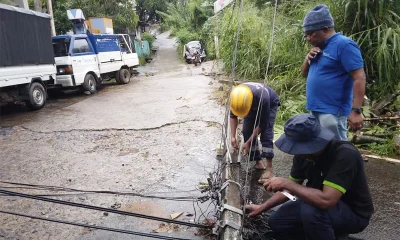
 News5 days ago
News5 days agoLeading the Nation’s Connectivity Recovery Amid Unprecedented Challenges
-

 Features6 days ago
Features6 days agoIt’s all over for Maxi Rozairo
-

 Opinion4 days ago
Opinion4 days agoRemembering Douglas Devananda on New Year’s Day 2026
-

 News6 days ago
News6 days agoDr. Bellana: “I was removed as NHSL Deputy Director for exposing Rs. 900 mn fraud”
-

 News5 days ago
News5 days agoDons on warpath over alleged undue interference in university governance
-

 Features6 days ago
Features6 days agoRebuilding Sri Lanka Through Inclusive Governance
-

 Business5 days ago
Business5 days agoSri Lanka Tourism surpasses historic milestone with record tourist arrivals in 2025


